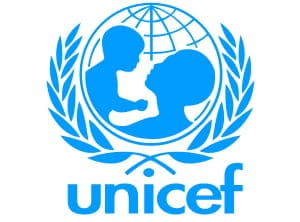“Children Displaced in a Changing Climate” Report
A recent study conducted by Unicef and the Internal Displacement Monitoring Centre (IDMC) has uncovered a startling trend: at least 43 million child displacements have occurred in the past six years due to extreme weather events. This equates to an alarming average of 20,000 children forced to leave their homes and schools every day. The research highlights the profound impact of floods, storms, wildfires, and droughts on children and the urgent need for climate action.
Overwhelming Impact of Floods and Storms
Between 2016 and 2021, floods and storms accounted for a staggering 95% of recorded child displacements. The traumatic experience of displacement can have profound consequences for children, including disruptions to their education, access to life-saving vaccines, and social networks.
Displacement Hotspots
China, the Philippines, and India collectively witnessed 22.3 million child displacements, over half of the total number. This is attributed to their geographical vulnerability to extreme weather events and large child populations. Small island states and the Horn of Africa, grappling with the climate crisis and overlapping challenges, also experienced significant child displacements.
Vulnerable Regions
Small Caribbean islands, such as Dominica and Saint Martin, were severely impacted by storms, with 76% of children displaced in Dominica due to Hurricane Maria. Somalia and South Sudan recorded substantial child displacements due to floods, affecting 12% and 11% of their child populations, respectively.
The Climate Crisis Connection
The report underscores the role of climate change in intensifying extreme weather events, making them more destructive and unpredictable. Climate-related disasters are the fastest-growing driver of child displacement, yet they are often overlooked in climate policies and discussions.
Hidden Dangers: Drought and Slow Onset Climate Impacts
While the study focused on immediate weather-related disasters, it acknowledged the underreporting of slow-onset climate impacts such as rising sea levels, desertification, and increasing temperatures. Drought-related child displacements, particularly in Somalia, Ethiopia, and Afghanistan, remain largely unreported.
Wildfires in the United States
Wildfires were responsible for three-quarters of child displacements in the United States, with additional occurrences in Canada, Israel, Turkey, and Australia. The expansion of the wildland-urban interface has contributed to these displacements.
Bleak Future Outlook
Children accounted for one in three of the 135 million global internal displacements linked to weather-related disasters between 2016 and 2021. The study predicts a worsening trend, with riverine floods posing the most significant future risk, potentially displacing 96 million children over the next 30 years. Urgent action, including the phase-out of fossil fuels, is required to address this impending crisis.
Month: Current Affairs - October, 2023
Category: International / World Current Affairs • Reports & Indexes Current Affairs


